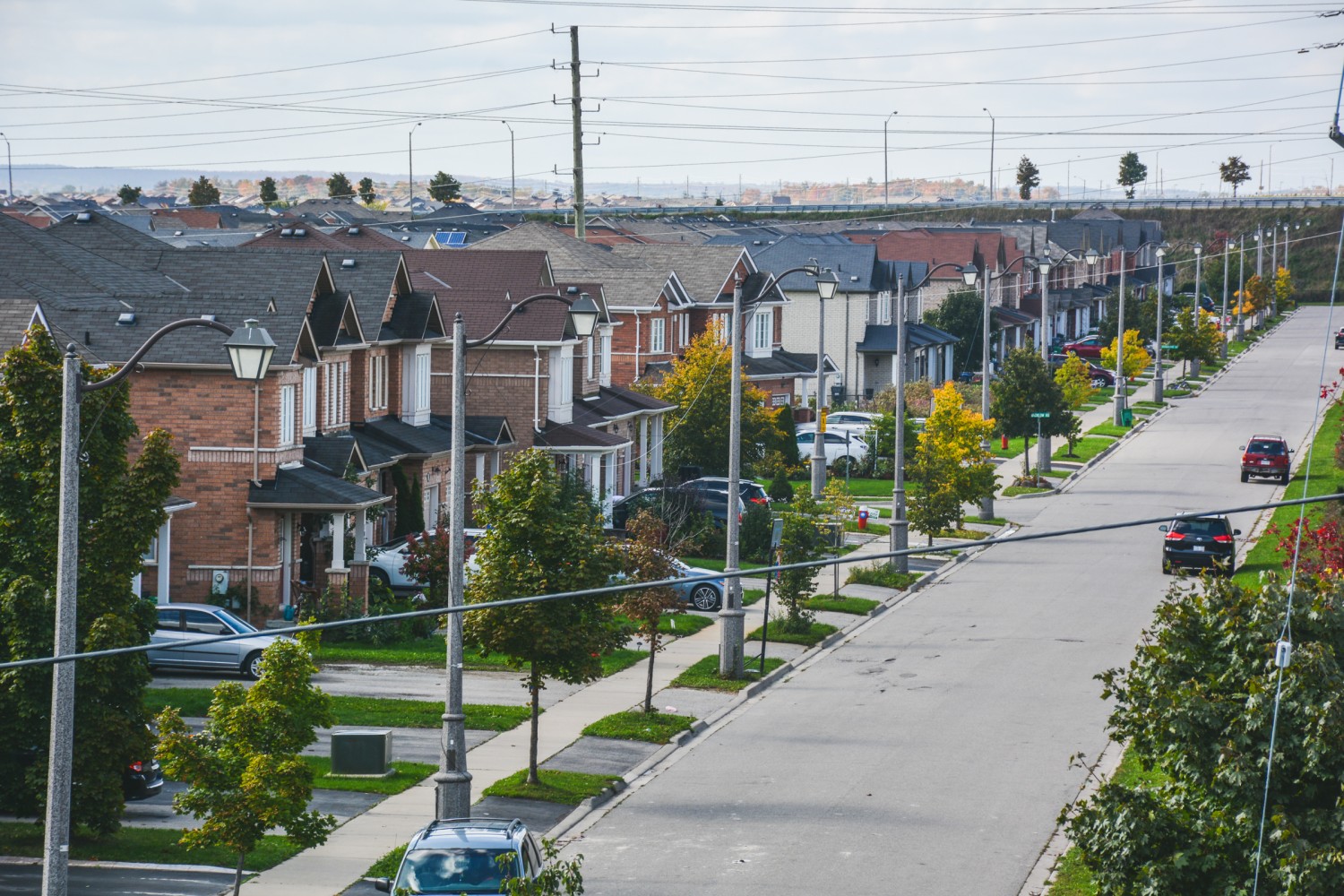
Finding reason and balance in Brampton’s suburban bliss as the threat of climate change looms
It’s October 10. It’s nearly 30 degrees.
From atop the Chinguacousy Road bridge above the CN rail tracks, the view north as far as the eye can see captures Brampton’s flattened suburban panorama perfectly. Rows of roofs create a shingled mosaic that carpets the city, and on this day reflects the sun’s violent rays back toward the sky.
To the south, the rooftops drop away like a cliff-line, as newly built homes give way to yellow soil and giant earth-moving machines, the bulldozers and backhoes that ready the land where row after row of corn grew not long ago, in preparation for homes that now spring up to feed the suburban dream.
The single-family home: holy grail of a generation, with a front and back yard, a sprawling deck, two-car garage and more rooms than many families can fill. It’s a family’s escape from the world, the spot to kick back, relax, entertain, cook, eat, sleep and repeat.
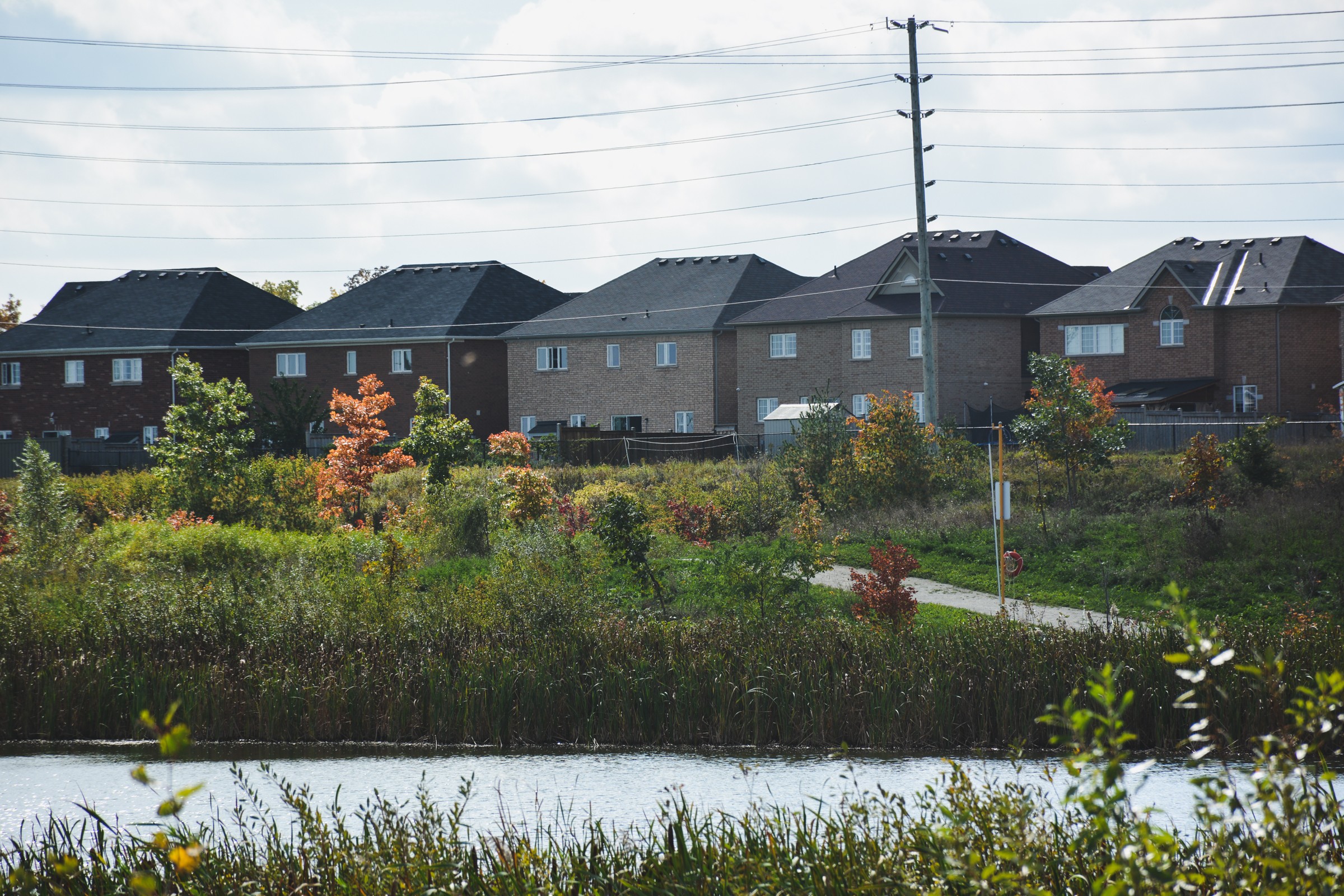
The desire for these boxes of brick and wood has permeated society on this continent from the early industrial American Dream to the post-war baby boom, and even now, in our supposedly enlightened post-modern age, people have desired a single-family unit more than any other material possession. For decades, builders have speculated, lobbied, wined and dined their way into creating the homes of people’s dreams.
Prosperity in the residential construction industry has defined the GTA since the ‘60s, and a booming population boosted the home-building and renovation sector into a $30 billion enterprise responsible for approximately seven percent of Ontario’s GDP, according to numbers from the Building Industry and Land Development Association.
The housing market reached a zenith in 2017, when prices for single-detached homes hit unprecedented heights throughout the year, with average costs crossing the million-dollar mark. While prices slipped slightly at the start of 2018 (Peel Region also saw one of the worst quarters on record for housing starts), that is more likely a minor correction than a signal that the desire for the sprawling suburban family retreat is dissipating.
In the next 20 years, that could become a serious problem.
It’s fitting that the draining humidity felt during the dog days of summer came back in mid-October with temperatures that felt more like mid-August. The heat peaked a day after the International Panel on Climate Change (IPCC) released a nightmarish report detailing how many of the most devastating impacts of climate change (think sea-level rise, flooding, food shortages, species loss, and the disappearance of coral reefs and the polar ice caps) may come much sooner than was originally warned.
The recent report states that if greenhouse gas (GHG) emissions continue at the current rate, the world’s climate could warm to 1.5C above pre-industrial levels by 2040. Previous studies and projections noted severe impacts from climate change would come when the climate had warmed 2C above pre-industrial levels. However, it’s now become increasingly clear that many of those impacts (sea-level rise, drought, food scarcity) will be felt at the 1.5C level.
If there isn’t a drastic change in policies around controlling greenhouse gas emissions in critical areas of industry, including development and land use policies, we may pass the point of no return, leading to the displacement of entire nations and a flood of environmental refugees that will cost the world economy trillions of dollars.
On a house-lined street near the Chinguacousy bridge, a shredded basketball net leans over the road, the red, white and blue mesh hanging on by a few threads. The damaged hoop, in front of a two-storey brick home, seems to long for the days when someone young would return from school to shoot some baskets.
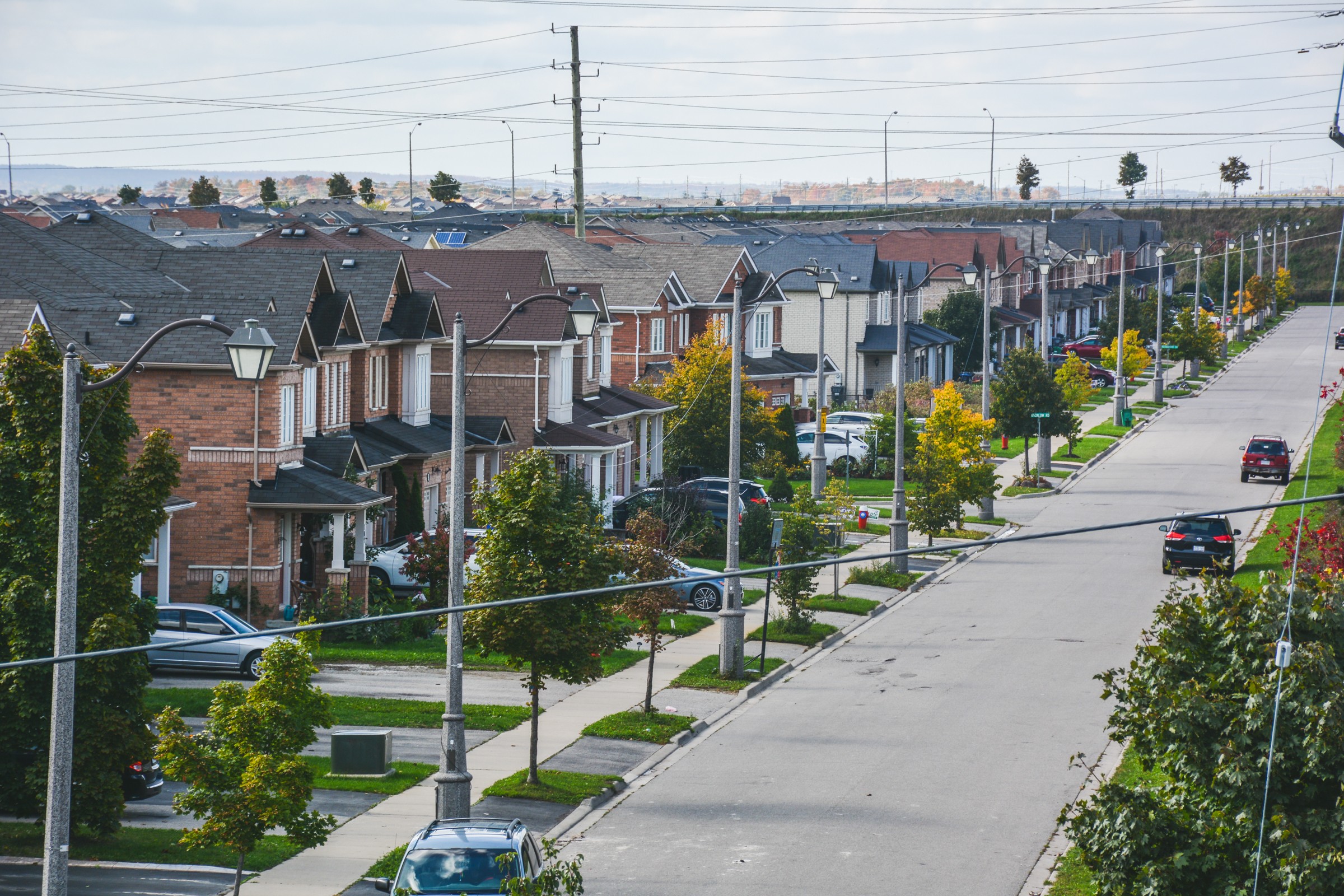
The metal rim, the tree-lined street and the house have, perhaps, already left their mark on a teen who called this place home. Maybe she or he is now off at work or away getting more education, dreaming of the day when an even bigger, better home becomes theirs.
Data shows that the idea of a single-family home has taken root in the minds of many millennials. It’s a way of living that lies deep within the subconscious desire of many for social status and a feeling of accomplishment, often heightened by parental expectations.
Younger buyers might want to start out in condos or other more dense forms of housing, but they are jumping into larger homes more quickly and at a higher rate than previous generations.
Analysis of U.S. census bureau data from 2012 to 2016, found that about a third of buyers between 33 and 37 purchased a four-bedroom home. The data shows that same cohort was much less likely to move into a larger house in 1980, 1990 and 2000, when only 24 percent of buyers that age purchased a four-bedroom home.
According to a Ryerson University report, at the time of the 2016 census, there were approximately 1 million millennials in the GTHA still living at home with their parents, many of them in the 25-29 age group who had delayed moving out on their own due to hefty costs in the housing market. As a result, 700,000 millennials will be looking for a new home over the next decade within the GTHA.
In 2016, 40 percent of millennials owned a home in the GTHA, according to Ryerson’s numbers, and that number could surge to as high as 60 percent by 2026, creating 500,000 new millennial-led households over the next decade. With greater wealth among the educated young, more and more access to credit, and the bonus lending power of boomer parents, those projected numbers could be easily eclipsed.
The recently released IPCC report raises urgent questions about what our changing climate means for our way of life. The way we are using land for living space, the amount of space being heated and cooled, and the environmental destruction caused by constantly stretching commute times to reach the land gobbling suburban dream are literally destroying the foundation of the life we crave.
Scientists say we are nearing the point of no return. In the next 10 years, our housing choices and way of life could lead to a catastrophic collision with the ecosystem of our planet.
The bird’s-eye view from where the Chinguacousy bridge spans the CN tracks is almost dizzying to look at. Roads snake their way through subdivisions that branch off from one another in twisting lines of adjacent squares, like an intricate but randomly played game of dominoes.
Each domino, a single-family home, reflects Brampton’s poor planning over the past 40 years.
According to numbers from the Brampton Real Estate Board, single-family home sales have dominated the market for years, well above other forms of housing. In 2017, Brampton had 4,577 single-home sales, totalling over $3.7 billion, with an average price of around $823,000. This far exceeded sales of semi-detached homes (1,776), condo-townhouses (626) and condo-apartments (561). At the halfway point of this year, the trend continued, with more than 2,000 single-home sales totalling $1.6 billion and an average selling price of around $812,000—again, well above sales for other forms of housing.
Subdivisions are still growing across the Greater Toronto Area. In the Toronto Census Metropolitan Area, which includes Peel Region, the number of housing starts actually increased, with high-rise units accounting for the biggest spike, followed by single-family units in cities such as Mississauga and Vaughan.
Despite changes introduced by the provincial government aimed at limiting sprawl by emphasizing intensification and multi-unit development, the middle-range of two to five-storey structures and townhouses is still being overlooked in favour of high-rises and detached homes. The problem, according to critics, is that this building pattern almost guarantees younger buyers starting off on the housing ladder will climb out into sprawl after they outgrow smaller apartment-style living.
The first quarter of 2018 saw over 11,000 housing starts registered across the Toronto CMA, a 12.6 percent increase over the same period in 2017. It’s possible that the provincial governor on growth might need some lag time to rein in sprawl, but if the population continues to increase sharply in a city such as Brampton, where projections show at least 300,000 new residents will settle over the next 20 years, the increased demand for housing, with the current type of stock being built, will likely see people continuing to buy larger detached homes.
It has generally been the case that where there’s demand, there’s supply. While drastic policy changes are needed, no one has found a solution to shifting the mindset. Millennials, once many move beyond the hyper-vertical phase of high-rise condo living with all its amenities and proximity to urban features, continue to lust after the single-family home, with a backyard, driveway and expanded space for future needs. For many newcomers to Canada, accustomed to living in extended-family arrangements, it’s the same desire for larger homes that attracts them to places such as Brampton.
The benefits of flipping a subconscious switch to encourage people to choose apartments, condos, townhomes and other low-rise units over the sprawling expanses of outer suburbia were recently outlined in a report from Ryerson University’s City Building Institute.
Finding the Missing Middle in the GTHA (Greater Toronto and Hamilton Area) highlights several ways cities can begin to shift away from the “tall and sprawl” approach that has dominated for so long, with construction of high-rise apartments or condos at one end of the spectrum and single-family homes at the other.
“The challenge is that’s really all we’re seeing getting built in the GTA,” says Graham Haines, one of the authors of the report. “We didn’t always use land efficiently when we first built on it.”
The report focuses on Mississauga, which, thanks to its sprawling swath of single-family homes and its mostly land-locked state makes it the perfect test case for creative minds to consider as they explore solutions to house a diverse and growing population.
The study recommends cities focus on infilling existing neighbourhoods with suitable (low-and medium-density) multi-unit residential developments. Creating this middle ground would shape more opportunities for housing and better affordability, the report finds. It could potentially allow people to work closer to home and get them out of their cars while using public transit more often, which becomes more realistic when people no longer have long daily commutes.
This would help reduce greenhouse gas emissions, thanks to preserving green space and reducing the number of cars on the road, a main source of GHG emissions.
So how much opportunity for mid-level housing intensification actually exists in a built-out suburban city like Mississauga? The results were surprising even to the report’s authors, Haines says. Using a set of five criteria for selecting locations—including major planned developments, areas around GO stations, existing community nodes, transit corridors and vacant lands—the study was able to find space in Mississauga to add about 174,000 new residential units in low- and medium-density housing projects. That’s enough to accommodate about 435,000 new residents.
That’s 435,000 new residents who aren’t living spread out across a land-eating subdivision, 435,000 residents who could live and work within the city, limiting their local travel needs to things such as grocery trips, family activities, entertainment and shopping. That’s 435,000 residents creating a much smaller carbon footprint and a more manageable impact on rising temperatures, making the battle against climate change that much more winnable.
It’s evident that if Brampton hopes to change course from the “tall and sprawl” conundrum, now is the time.
According to numbers in the Ryerson report, Mississauga currently houses the largest proportion of Peel’s population, 51 percent, while Brampton is home to 44 percent. However, over the next 25 years, as Peel’s population is expected to grow from its current 1.46 million to 1.97 million, that balance is set to shift. Brampton is expected to accommodate 64 percent of the region’s growth, compared to Mississauga’s 21 percent. Caledon will absorb the remaining 15 percent.
“There’s a big appetite for development in Brampton,” Haines says. “If Brampton City Council and Brampton residents want to see more vitality coming to their streets, they need to put a solid plan in place … .You don’t just want to open up a free-for-all.”
“Free-for-all” is how some residents would describe Brampton’s residential development in recent years, which has been a patchwork of decisions mostly driven by the desires of the development industry.
“We weren’t planning and building our city in an orchestrated, thoughtful method,” incumbent mayor Linda Jeffrey told The Pointer in a previous interview. “The development community was essentially driving where growth happened. I think this next term, we have to be more circumspect, and we’re going to have to say no.” In her conversation with The Pointer, Jeffrey recognized the need for the diverse housing styles being heralded in the Ryerson report.
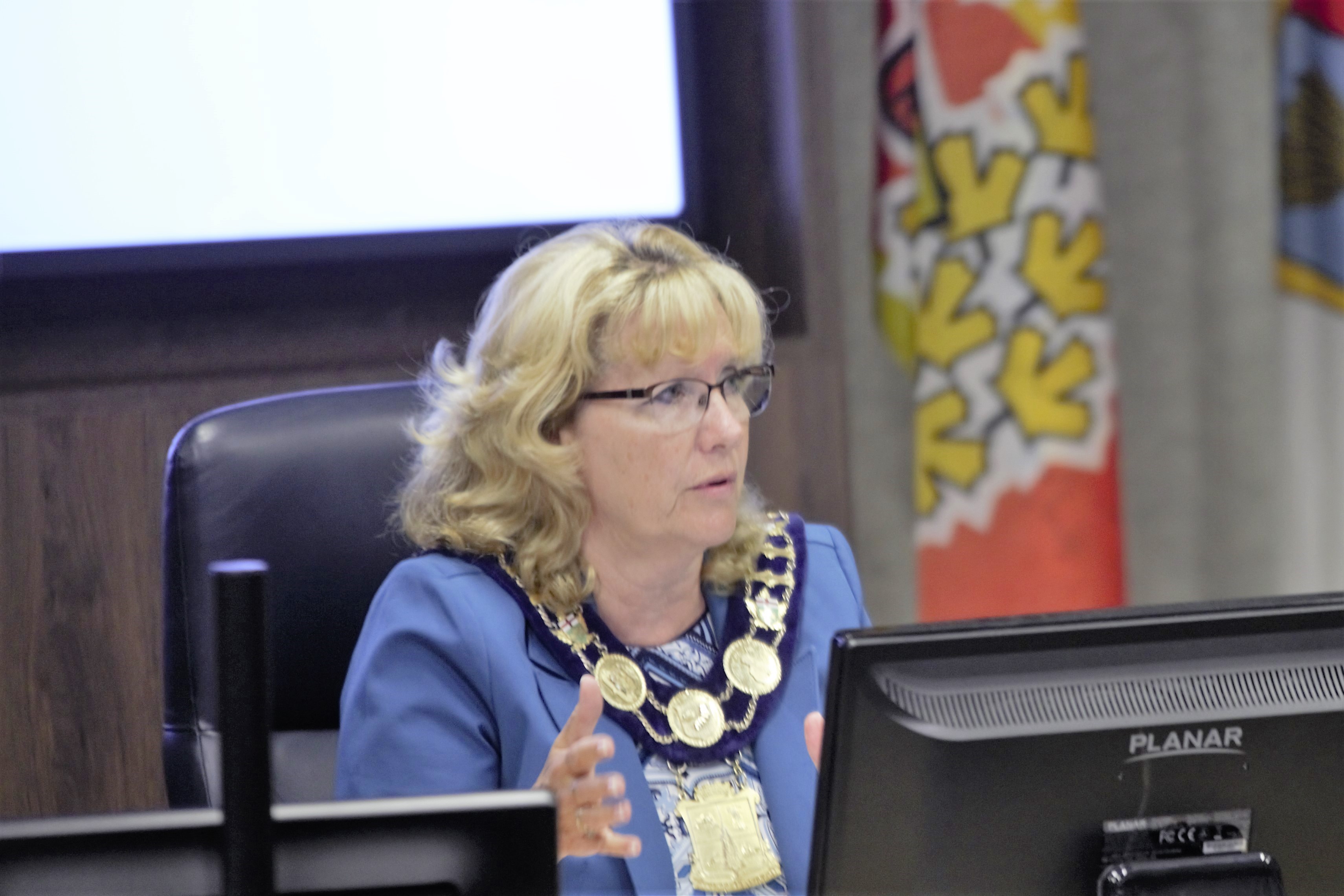
“There aren’t many choices,” she says. “I need something in the middle—I need townhouses, I need condos, I need rental housing, and all those different kinds of options.”
To find this middle ground, Haines says cities need to begin developing policies and zoning that make building different kinds of multi-unit housing appealing to builders. There’s a reason why the condos and single-family homes have dominated the housing landscape for so long.
“They’re proven business models that work for them,” Haines says.
But it’s clear they’re no longer working for middle-income families in the GTA, where the average price of a home (across all categories) is now about $782,000. That number drops slightly, to around $693,000, in Brampton.
In Brampton’s case, finding the middle ground may not mean infill, as the city still has a lot of space to expand, but to accommodate growth sustainably that expansion needs to be done in a way that doesn’t repeat past mistakes. The right way, Haines says, involves concrete, long-range planning.
The smart growth Haines advocates is something local developers aren’t accustomed to, including many who control a good percentage of the undeveloped land within the city’s urban growth boundary. Over the past 25 years, compliant city councils, often filled with members who received developer backing in their election campaigns, allowed builders to dictate the zoning and application approval process. The result was a poor urban planning process and a tax base overly reliant on single-family home owners, whose properties do not generate as much tax revenue per hectare, while requiring expensive municipal infrastructure that has to stretch out across a much larger area.
Turning that around may begin with the Brampton 2040 Vision, created by high-profile Vancouver urban planner Larry Beasley under a commission from the city. It lays out a somewhat utopian view of what Brampton could look like in 20 years. One part of the plan focuses on “complete living,” which involves revitalizing existing neighbourhoods and a more sophisticated transit network.
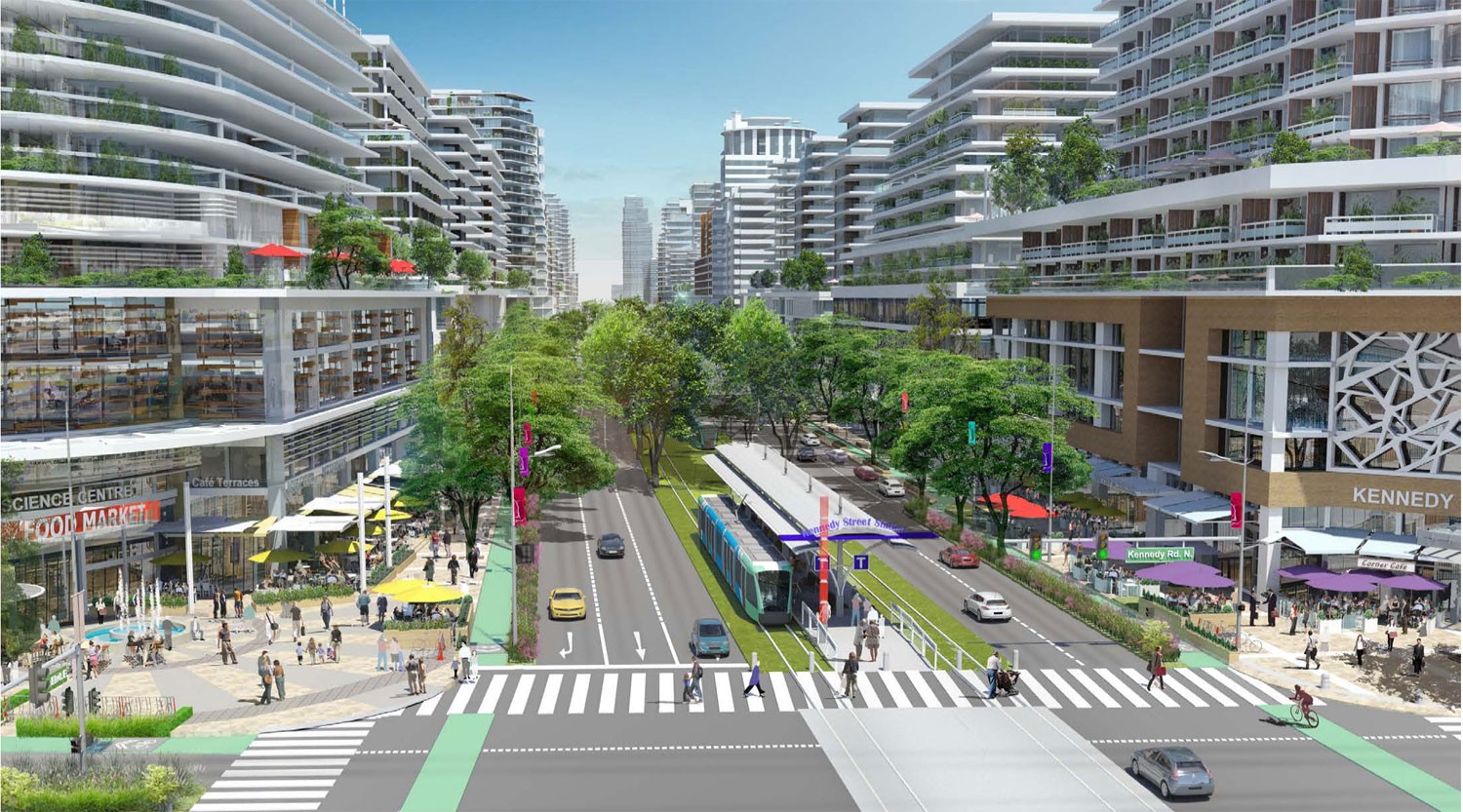
“A comprehensive strategy for organic growth will include a master plan for re-use and infill and an area-wide civic improvement project,” the Vision says.
The Ontario government has also recognized the need to introduce new land-use policies to address environmental threats as part of its Climate Change Action Plan. It calls for mandatory climate change mitigation in municipal official plans. It would also require municipalities, over the next five years, to eliminate minimum parking requirements in their zoning bylaws, especially for housing projects located in transit corridors and other high-density, highly walkable communities.
The IPCC makes it clear that cities need to be a focus for the climate change battle. According to supporting documents in the report, 68 percent of the world’s population will be living in urban centres by 2050, placing a large burden on cities to build sustainably amid unprecedented expansion.
It’s a tall order for a city like Brampton, where developer interests have been entrenched in the planning system and where elected officials have shown little backbone in the fight for smart growth. The coming municipal election will play a significant role in determining how the city grows.
The report also notes that if the potentially deadly impacts of climate change are to be avoided, change needs to start immediately. Many of the large-scale measures recommended, such as carbon pricing and a crackdown on large industrial producers of GHGs, as well as pushback against the traditional building industry, are regarded as political suicide for future leaders, particularly when implementing them is perceived as having negative effects on the economy and people’s lifestyles.
That’s a frustratingly short-sighted view, but it doesn’t mean municipalities can’t do their part. The Ryerson report is just one blueprint for developing in a smart and sustainable way.
In fact, the climate change strategy introduced in Peel Region in 2011 hints that local politicians are becoming more attuned to the role they must play in the fight against global warming.
“It is at the community level where the effects of climate change (such as compromised air and water quality, heat alert days and strained natural resources) will be experienced. It is also at this level that the greatest opportunities lie for both mitigating and adapting our neighbourhoods, natural systems and built infrastructure to anticipated impacts,” the document reads.
With the region on board, it would only take shifting the mindset of a generation away from the single-family home and toward more sustainable forms of housing.
To find reasons for doing so, one need look no further than the IPCC’s report, because it’s becoming increasingly clear that we just may not have a choice.
Submit a correction about this story


